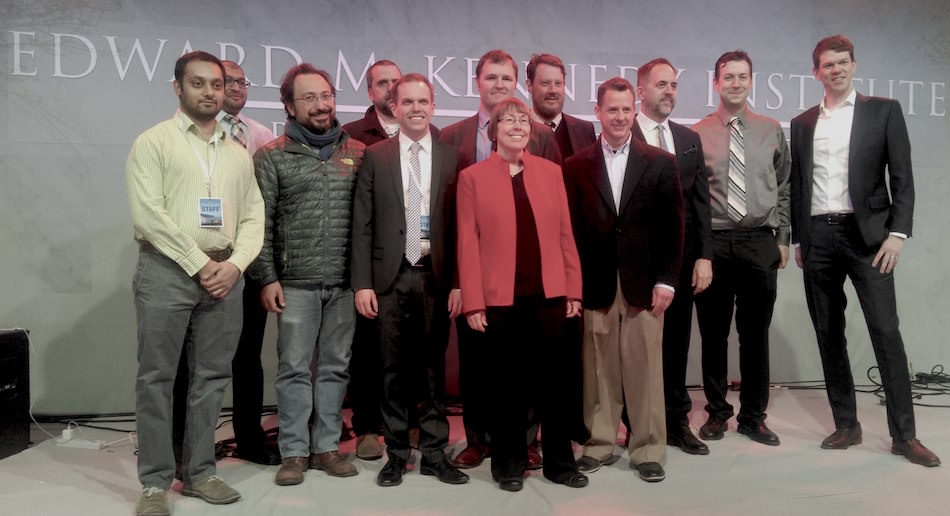Fulfilling a Vision: Designing The Edward M. Kennedy Institute Experience
Posted April 2, 2015

Speaker after speaker expressed the same sentiment: Senator Ted Kennedy loved the Senate. He loved to debate–even argue–about the issues facing the nation, but then he’d put his arm around his opponent and the two would go off laughing together. President Obama, Vice President Biden, Senator Trent Lott, Senator Tom Daschle—all spoke fondly of their time in the Senate, working and arguing with Ted Kennedy. Always, always, he respected the institution and the views of other Senators and sought common ground. Senator John McCain summed it up in a heartfelt way: “The place isn’t the same without him. I miss my friend.”
On March 30, 2015, ESI’s Design’s team, along with a host of production colleagues, attended the opening ceremony of the Edward M. Kennedy Institute for the United States Senate (EMKI) What an incredibly rewarding day. We’ve spent years working on this project, willing it into being. Always we kept Senator Kennedy’s vision and example in mind—the EMK Institute would be a place of civic engagement, where students and the general public would experience the integral role of the U.S. Senate and the complex, collaborative nature of the legislative process.
For me, this project began in December 2007 when Senator Kennedy came to ESI Design’s office. He spoke of his vision for this new institute he wanted to build. All Americans would be able to go there to learn about their government and what makes the U.S. Senate a unique legislative body. The heart of the institute would be a recreation of the U.S. Senate Chamber. Here, young people would fully experience what it means to be a senator, tackling the big challenges facing the nation. This would be an innovative laboratory of democracy, training the next generation of leaders.
Over the last two years, almost 2,000 students have already taken part in the Senate Immersion Module (SIM), helping us streamline the experience and work out the technical kinks. I believe Senator Kennedy would be proud, watching the students in action. You can see Senator Kennedy’s influence: In the EMKI committee rooms, when a group of students try to piece together legislation that will draw votes from both sides of the aisle. In the EMKI Senate Chamber, when an 8th grader stands before her peers and passionately, but respectfully, argues her position on an issue.
You can see it, too, as families walk through the corridors of the Institute, engaging in their own Senate experience. Certainly, they learn about the Senate, its history, and the people who have served this nation as Senators, but they also experience what it’s like to debate, negotiate, and come to a consensus about an issue to get legislation passed. Most of all, you can see it when they pledge to become more involved in the civic affairs of their own communities.
The EMK Institute fulfills Senator Kennedy’s vision. This is a place that engages the American public in civic discourse and embodies the values that Senator Kennedy exemplified—taking part in civic life, respecting the views of others, and building consensus to achieve progress and accomplish together what’s best for the nation. We hope these values will ripple outward from the EMK Institute to communities all across the nation and from there reverberate through the halls of Congress to re-inspire our representatives to find common ground and get the people’s business done.


Join The Conversation